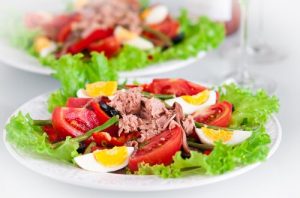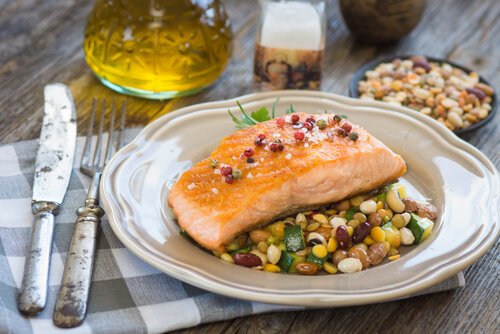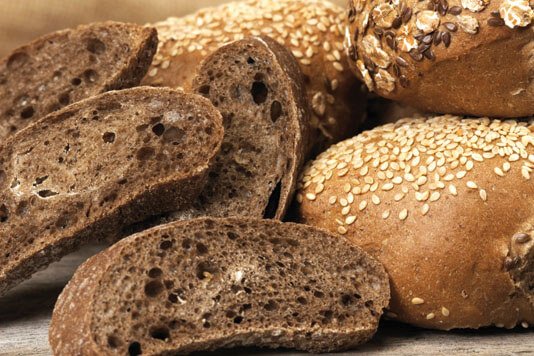Recipes for Diabetic Women During the Third Trimester

It’s normal to feel tired and overwhelmed during the third trimester of pregnancy. These recipes for diabetic women will help you incorporate nutrients into your diet that are important for both you and your baby.
During this stage of pregnancy, women may feel tired and stressed due to the long process that they’ve gone through. In addition, the baby’s nutritional needs increase as the pregnancy continues.
When it comes to diabetics, these issues should be considered when planning out a diet. That’s why we decided to create a list of recipes for diabetic women especially for the third trimester of pregnancy.
During the final months, pregnant women normally have to incorporate 2,400 calories per day in their diet. When it comes to mothers suffering from diabetes however, it’s a little more complicated. This disease can create certain limitations regarding feeding.
Foods that diabetics should avoid:
- Saturated fats: these substances produce an increase in cholesterol and therefore they increase the risk of suffering from a stroke or a heart attack. Dairy products with fat, fatty red meats and most fried foods contain saturated fats.
- Foods with starch: corn, peas, potatoes, white rice and white pasta all contain starch. It’s important to replace these foods with whole grain bread, brown rice, oatmeal and vegetables such as broccoli, beets, artichokes and eggplants.
- Sugary foods: soft drinks, ice cream and canned fruits are all included in this category.
- Alcoholic beverages: these beverages may contain sugar. Specialists recommend not having more than two drinks per day for men and one drink a day for women.
What is recommended?
- Vegetables with green leaves.
- Citrus fruits.
- Non-fat milk and yogurt.
- Fish with high omega-3 content.
- Yams.
- Tomatoes.
- Nuts.
Recipes for diabetic women during the third trimester
Considering the restrictions mentioned above, here are some recipes for pregnant women during this important stage. It’s important to clarify that it’s always best to consult your specialist if you need any more advice on this issue:

Hake with sautéed chickpeas and vegetables
Ingredients
- 2 slices of hake
- 1 carrot
- 1/2 zucchini
- 1/4 onion
- 4 mushrooms
- 1 can of chickpeas
- 2 tablespoons of olive oil
- 1 pinch of salt
Preparation
- Wash and cut the vegetables.
- Pour a little oil in a pan and cook the onions. Once browned, add the mushrooms and cook over medium heat for a few minutes.
- Add the rest of the vegetables and a pinch of salt. Cook over low heat.
- After 8 to 10 minuets, add the drained chickpeas.
- Stir well and allow the ingredients to rest in the pan for a few minutes.
- Brown the hake fillet with a little oil and salt.
- Serve the fish and vegetables together in a plate.
Spinach, turkey and cheese sandwich
Ingredients (for two servings)
- 1 handful of spinach
- 2 slices of whole grain bread
- 1 slice of cheese
- 1/2 avocado
- 1/2 slice of turkey breast
Preparation
- Wash the spinach.
- Cut the avocado into strips.
- On a slice of bread place a slice of cheese, a handful of spinach, avocado, the slice of turkey breast and another handful of spinach.
- Heat in a pan or in the oven until the cheese melts.
“During these important months, women should consume at least 2,400 calories per day.”
Egg and tuna salad
Ingredients
- 4 lettuce leaves
- 1 tomato
- 1 egg
- 1/2 onion
- canned tuna
- 2 teaspoons of salt
- 3 tablespoons of olive oil
- 1 tablespoon of wine vinegar

Preparation
- Cook the egg for 10 minutes in a pot of boiling water. Add a tablespoon of salt. When ready, let it cool and then peel and cut into small pieces.
- Wash and cut the vegetables. The onions should be cut in strips and the tomatoes in pieces.
- Wash the lettuce and tear it into pieces with your hands.
- Add the tuna to the ingredients mentioned above and mix together.
- Prepare the dressing using vinegar, olive oil and a teaspoon of salt.
- Add the dressing to the salad and enjoy.
These recipes for diabetic women are just a few of the available options for the third trimester of pregnancy.
Keep in mind that it’s important to consult your doctor or nutritionist before starting a new diet. You may have specific nutritional needs that can be identified through blood tests.
However, if you avoid contraindicated foods and consume a healthy diet which includes vegetables and fruits, there’s no need to worry.
The recipes mentioned above aren’t only simple, but also practical. Try them out!
All cited sources were thoroughly reviewed by our team to ensure their quality, reliability, currency, and validity. The bibliography of this article was considered reliable and of academic or scientific accuracy.
- De Souza R., Mente A., Maroleanu A., Cozma AI., et al., Intake of saturated and trans unsaturated fatty acids and risk of all cause mortality, cardiovascular disease, and type 2 diabetes: systematic review and meta analysis of observational studies. BMJ, 2015.
- Ammon HPT., Boswellic extracts and 11 keto b boswellic acids prevent type 1 and type 2 diabetes mellitus by suppressing the expression of proinflammatory cytokines. Phytomedicine, 2019.
This text is provided for informational purposes only and does not replace consultation with a professional. If in doubt, consult your specialist.








